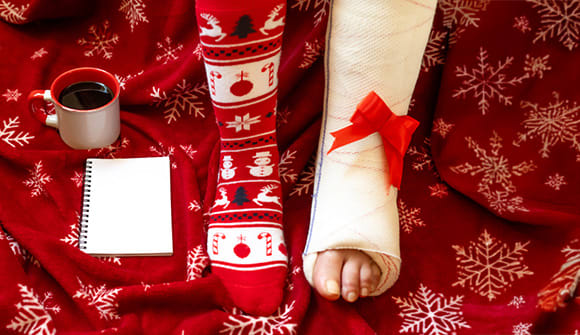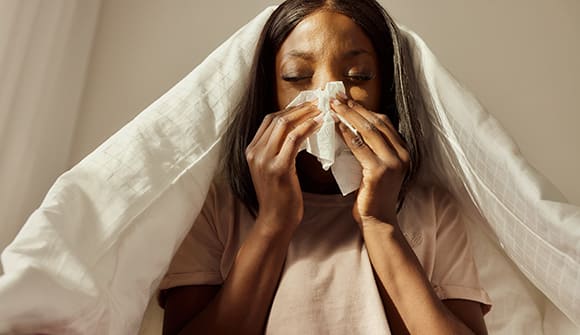Winter sun safety
Why sunscreen’s still key in cold or cloudy weather.
Article Date:

You may be more relaxed about protecting your skin from the sun in the winter, but a chill in the air doesn’t mean the sun's rays are any less potent. So before you stash away your sunscreen with your swimsuit, it’s still important to follow summer precautions when the temperatures dip.
“UV radiation exposure is not related to the outside temperature and is present year-round. Sunscreen is a must. Even on cloudy days, it’s important to apply as the UV rays can still reach our skin,” said Konstantinos Chouliaras, MD, a board-certified surgical oncologist at Baptist MD Anderson Cancer Center.
Using sunscreen year-round
There are two broad categories of sunscreen: chemical and physical. Chemical products work by absorbing UV rays, while physical sunscreens contain ingredients such as zinc oxide or titanium dioxide that can act like a shield and deflect the sunlight.
“No matter what type you choose, the American Academy of Dermatology (AAD) recommends a water-resistant, broad-spectrum sunscreen with an SPF of 30 or higher,” said Dr. Chouliaras. “SPF stands for ‘sun protection factor,’ and it measures how much UV radiation is required to cause a sunburn after the product has been applied, relative to unprotected skin.”
Don’t skimp on the sunscreen, either. Cover all exposed areas, including your ears and scalp.
“If you’re swimming or playing sports, more frequent reapplication of sunscreen is necessary but generally, sunscreen should be reapplied at least every two hours,” said Dr. Chouliaras.
Fortunately, when you’re outdoors (and slathered with sunscreen!) you can also shield your skin by dressing in protective clothing, wearing sunglasses, staying in the shade and avoiding peak sunlight hours between 10 am and 4 pm.
Understanding UV exposure risks
“The skin is the largest organ in the human body, serving multiple functions as our protective barrier from the outside world,” said Dr. Chouliaras.
The sun’s damaging ultraviolet (UV) rays can power through clouds, causing premature skin aging and increasing your risk of getting skin cancer, including melanoma, which forms in the melanocytes (the cells that color the skin). Although melanoma is less common than other skin cancers, it's often known as the most serious form because of its ability to grow quickly and spread to other parts of the body.
“Sun exposure is a risk factor and is particularly related to intense intermittent exposure to UV radiation,” said Dr. Chouliaras. “Sunburn history, especially during childhood, is associated with an even higher risk of developing melanoma. Other known factors include having blue eyes, red or blond hair, fair skin, a family history of melanoma, and use of indoor tanning.”
It's important to note that trying to capture a golden winter glow via a tanning bed isn’t a healthy alternative.
“Tanning salons use lamps that generate ultraviolet radiation. The World Health Organization has classified indoor tanning beds as a known carcinogen due to their increased risk for skin cancer, particularly melanoma,” said Dr. Chouliaras. According to the AAD, women younger than 30 are six times more likely to develop melanoma if they tan indoors.
Blocking skin cancer
Skin cancer is the most common cancer in the United States, but it's also one of the most preventable, according to the AAD.
“Adequate sun protection is a crucial step we can take to decrease our chances of developing this serious condition,” said Dr. Chouliaras. “Monitor your skin for suspicious spots or moles that are changing in shape, size or color, or bleeding or itching. See a dermatologist if you have a family or personal history of melanoma, or more than 50 moles.”
Have questions about a suspicious spot on your skin?
Schedule an appointment with your primary care physician, who can refer you to a specialist if needed. To find the right primary care doctor for you, fill out the Baptist Primary Care appointment request form or call 904.202.4968 (4YOU) and speak to a care coordinator. For an appointment with a cancer specialist, visit baptistmdanderson.com.



